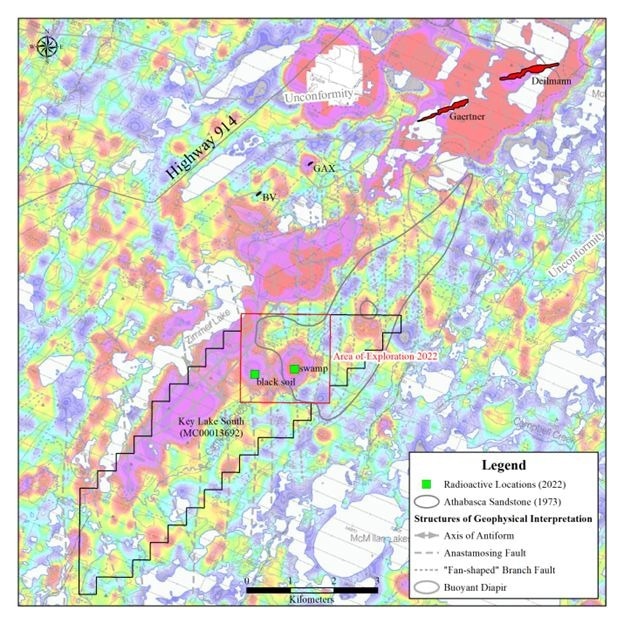Traction Uranium Corp. and Ugreenco Energy Corp. have reported that Phase 1 of the fall kick-off ground program at their Key Lake South (KLS) uranium project in Canada’s Northern Saskatchewan highly regarded Athabasca Basin has been completed. The team has also discovered two new, previously unidentified radioactive anomalies at KLS.
 Map showing Radioactive Anomalies. Image Credit: Traction Uranium Corp.
Map showing Radioactive Anomalies. Image Credit: Traction Uranium Corp.
The University of Saskatchewan’s Quartz Degradation Program, led by Dr. Yuanming Pan, used research geologists from Traction Uranium to conduct boulder prospecting, mapping, and sampling during Phase 1.
A radioactive black soil anomaly and a radioactive swamp located on the KLS site were two of the most interesting new surface radioactive anomalies that had been discovered during the study.
Traction’s Research Team gathered a sample of radioactive black soil for further separation and PXRD (Powder X-Ray Diffraction) investigation to determine the mineral makeup of this black soil.
The distribution of the new radioactive anomalies matches the structures that can be inferred from geophysical studies, supporting the idea that these anomalies are controlled in situ by structures rather than being randomly carried by glaciers.
Phase 2 of the fall program will begin with the survey when MWH Geo-Surveys begins mobilizing to the KLS Field at the end of this week. The 4.15 km2 region, which will be covered by the ground gravity survey, will be used to identify structures that have been altered in the basement.
For the upcoming winter 2023 diamond drill program at KLS, high-priority drill targets will be defined and generated using the findings from both the Phase 1 and Phase 2 Fall Field Programs at the Key Lake South Uranium Project.
We are buoyed with the results of our Phase 1 program at KLS, having our team find two new radioactive anomalies in our initial program is definitely exciting. The radioactive black soil is of high interest to our team and is currently undergoing extensive analysis at the UofS.
Lester Esteban, Chief Executive Officer, Traction Uranium Corp.
Esteban added, “I commend the tremendous effort and dedication our research geos have invested into this initial field program and we look forward to sharing the data they have collected and compiled once the results come in.”